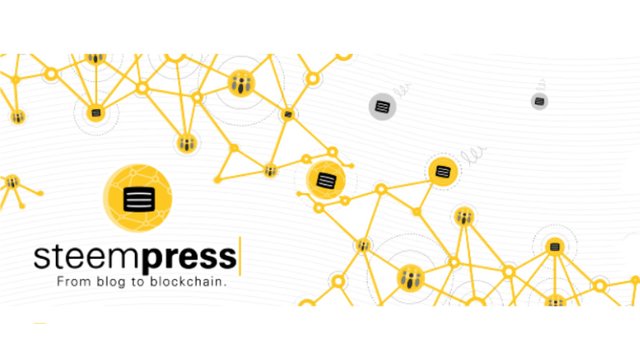Exploring Point of View: Writer Workout 3.0
Yesterday’s Workout in The Writers’ Block may have been one of our most productive sessions yet. We wrapped up our discussions about “Mary Sue” characters with our authors describing renditions of Laura Croft, Wolverine, and Rey from Star Wars that would have actual literary impact. Their blend of imagination plus solid observation of human behavior made for some stunning re-fits of well-known personas.
Point of View
From there we moved on to talk about POV (Point of View.) POV is taken for granted quite often by writers who don’t understand what a powerful device it can be. POV exists in every work of fiction. Defining and refining it takes practical understanding and skill. Careless handling of POV can disorient the reader, distance them from the story, and sometimes render a piece virtually incomprehensible.
In first person and third person alike, there are levels of intimacy with the character. These are dictated by use of narrative voice and Deep POV. We’ll explore those more in a moment. First, it’s important to understand how POV as a tool can affect the reader.
Let me tell you a story about a man named Nico, a successful stock broker with the world on a string, who had no way to know that his life was about to change.
Nico stepped off the curb, glancing right, then left, and right again. Things were going well at work. Home left a lot to be desired, but it could be worse. He couldn’t think of many areas of his life he’d want to change.
Wind kicked up from a passing taxi, swirling exhaust into Nico’s face and fluttering his tie. He glanced right, left, right again—enough distance between cars that he could make a run for it. Seemed like all he did was run any more, but at least it got him somewhere. Bull market, investments on the rise, and then there was Gina. Not much of a cook, but a wildcat in the sack. Sweet deal for a kid who grew up on the wrong side of the barrio. His lucky star had nowhere to go but up.
Here are three possible openings for the same story. Which one makes you want to keep reading? Which one gives you the fastest, most indelible impression of Nico? Which one fills you with the most sense of foreboding? Another way to present these questions would be to simply ask if you prefer being told a story, or experiencing it.
In the first example, we see a clear case of omniscient third person. If another character appeared in the scene, we’d be privy to their thoughts, motivations, and secrets just as we are Nico’s. The second example is limited third person. The author is not a presence in the narrative and there is no presumption of future events. We’re privy only to what Nico thinks, feels, senses, and experiences. Example number three is a blend of limited third person and Deep POV. Not only are we privy to Nico’s thoughts, feelings, sensory input, and experiences, but the reader actually gets to ride along for a brief moment inside our character’s mind and personality.
Omniscient Third
Omniscient third person is a legitimate POV, but rare is the occasion when it’s done well. True omniscient third features the author as the narrator and has its own distinct voice outside that of any any character, including the protagonist. Many popular authors write in what they believe is omniscient third, probably because it’s easiest. If their name sells books, no publishing house will challenge them. Also, there’s the money component. It’s much cheaper for a publisher to pay for a cursory edit than a comprehensive one. If the author sells books, who cares if the writing is lazy.
However, instead of omniscient third, most often what authors manage to pull off is simply a case of headhopping. Headhopping is one of the most fundamental flaws in modern literature. If the narrative jumps back and forth between POVs and constantly pulls the reader out of the moment, there’s a huge risk that the reader will become bored or irritated with the story and simply stop reading.
Most contemporary editors have little patience for headhopping. It’s the “red line of death” for many professionals, which means it’s the absolute point when they stop reading and reject the draft. Headhopping indicates that the author lacks mastery of the material and possibly of their craft, and that their tendency is to rely on shortcuts instead of strong writing. At The Writers’ Block, we caution against the use of omniscient third person because ninety-nine times out of a hundred, it devolves into headhopping, usually replete with info dumps and unnecessary exposition. Additionally, we often see these same authors breaking the fourth wall (addressing the reader directly) and crippling their story with author intrusion.
Limited Third
Limited third person requires a writer to choose one character through which to show a scene, and to remain firmly in that character’s head for the duration. This avoids the risk of disorienting the reader and also eliminates the need for filters like “he thought” or “she knew.” Rather than telling the reader what the character felt, the author can simply show it. Limited third person encourages a stronger reader connection with the character and results in a higher likelihood that they will find the character sympathetic and relatable. It is possible to switch POV within a story or novel, but this is best accomplished with a very clear and natural scene or chapter break.
Deep POV
Deep POV, when used judiciously, can ratchet up the tension and make a scene feel very immediate for the reader. It’s often presented in fragmented, informal—even colloquial—language. Any time a reader “becomes” the character, the likelihood that the reader will finish the story and feel hungry for more becomes greater. If we’re trying to build an audience and sell books, that’s a very desirable effect to have.
In The Writers’ Block, we often hear people complain about having “too many rules” to follow in commercial fiction. What happens if you substitute the word “tools” for “rules?” Can you really ever have too many tools, regardless of your vocation? Publishing conventions and standards of quality exist for a reason. We ignore them at our own peril. At the end of the day, most writers just want to be read. Our goal at The Writers’ Block is to help authors remove every possible flaw in their finished product so that they will attract and retain readers, and succeed not only with Blockchain platforms, but with mainstream markets.


Posted from my blog with SteemPress : http://www.writersblockcentral.com/uncategorized/exploring-point-of-view-writer-workout-3-0/

This information was very insightful. When I have written stories and tried to develop my characters, I sometimes find myself getting sick of them or their personalities that I am developing.
I have a tendency to kill them off too early because the narrative drags out too long.
Keep writing, @pyemoney. I think it's important to work through those issues by writing, writing, writing.
Thanks, @Jayna. Will do.
I actually loved all three of the POV examples! They are very different styles, and I think authors can use them to great effect, if they master how they want to use POV in their fiction writing, and do it consistently. I read so much, and I'm often flummoxed by the fact that very experienced and famous writers break all the rules. I just read "Little Fires Everywhere," by Celeste Ng, for example, and she literally head-hops within a single paragraph. And yet she somehow makes it work! (Note: I am not advocating this. I'm just saying that in modern literature there are no hard and fast rules. So it's important to know that you will see all the things we recommend not doing all over the place in popular literature.)
I think it's so important to write thoughtfully, and with purpose, and choose a POV approach -- whatever that may be -- and perfect it. Also, if I recall, it was Picasso who made it very clear that he mastered all the fundamentals and perfected his craft in the prescribed way, before he went off the rails and created cubism!
votes me plz